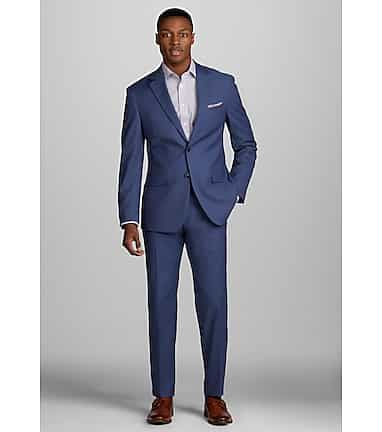Tailored Suits Perth: Premium Custom Suits for every single Celebration
Wiki Article
Recognizing the Tailoring Process: From Material Selection to Last Suitable for the Ideal Wardrobe
The tailoring process is an intricate interplay of art and scientific research, beginning with the vital decision of fabric choice and finishing in the precise changes of last fittings. Each textile kind brings one-of-a-kind qualities that influence not just the aesthetic charm but also the garment's longevity and viability for various celebrations. Understanding the nuances of customizing strategies can raise one's closet to extraordinary levels of class. As we explore these elements better, one need to take into consideration how also the tiniest information can dramatically influence the total end result of one's individual style.Significance of Material Option
Selecting the best textile is important in the customizing process, as it directly affects the convenience, toughness, and overall visual of the last garment. The selection of material sets the structure for the garment's performance, capability, and design. Various textiles have unique buildings, such as breathability, stretch, and weight, which can dramatically influence just how the garment drapes and fits the body.
A tailored item made from a proper fabric not only showcases craftsmanship however additionally raises the wearer's confidence. Understanding the nuances of fabric selection is paramount for any kind of customizing endeavor. It makes sure that the end product not just satisfies the visual wishes of the client yet also straightens with useful demands, thus achieving an unified balance between form and function in the tailored closet.
Sorts Of Fabrics and Their Uses
Comprehending the various kinds of textiles available is essential for making educated decisions throughout the customizing procedure. Each material has distinct characteristics that dictate its suitability for certain garments and occasions.Cotton, understood for its breathability and softness, is suitable for sportswear and summer season apparel. Its versatility allows it to be customized into everything from t shirts to gowns. Wool, on the various other hand, is favored for its heat and structure, making it an exceptional option for official matches and outerwear. Its all-natural elasticity helps garments maintain shape in time.
Silk shows high-end and is lightweight, making it excellent for eveningwear and fragile shirts; nonetheless, it needs careful handling because of its fragility. Linen, with its distinctive surface, is a popular selection for cozy environments, supplying a crisp and ventilated feeling, however it wrinkles quickly, which may affect the garment's look.
Synthetic materials, such as polyester and nylon, deal longevity and resistance to creases, making them ideal for everyday wear and active apparel. Recognizing these textile kinds and their buildings enables far better decision-making, making sure that each tailored item not only fits well however likewise lines up with the intended objective and celebration.
The Tailoring Strategies Described
The art of tailoring relies on a variety of strategies that change fabric into well-fitted garments. Central to this procedure is pattern preparing, where a tailor produces themes based upon the client's measurements and preferred style. This first action makes sure that the garment will fit the user appropriately before wedding suits perth any reducing occurs.Once patterns are established, cutting techniques come into play. Precision is critical as errors can cause misfitting garments. Tailors typically utilize numerous cutting approaches, such as single-layer cutting for detailed styles and multiple-layer cutting for effectiveness on basic patterns.
Basting is an additional vital strategy, enabling tailors to briefly sew textile assemble for an initial fitting (custom suits perth). This approach uses the opportunity to examine the drape and total shape prior to last sewing
Seaming strategies, including flat-felled joints and French seams, improve the garment's resilience and visual allure. Tailors likewise use techniques such as interfacing and cushioning to offer framework and form to details locations, like collars and shoulders.
Finally, ending up methods, consisting of hemming and edge completing, make certain the garment's longevity while offering a sleek appearance. Together, these methods develop the foundation of effective tailoring, resulting in beautiful, custom-fit clothing.

Fitting Modifications and Considerations
After the initial tailoring strategies have actually been used and the garment is built, fitting modifications come to be paramount to attaining the perfect fit. These adjustments resolve numerous facets of the garment, guaranteeing it contours to the wearer's physique and boosts total look.
The surge of pants is another critical aspect; it needs to sit comfortably above the hips without creating pain, permitting simplicity of motion. Hemming sizes for both trousers and skirts need to mirror the wearer's favored design while appreciating proportions.
Additionally, interest ought to be offered to the rear of the garment, guaranteeing that there are no unattractive pulls or excess fabric - tailored suits perth. Each change needs to be diligently taken into consideration, as even minor alterations can dramatically impact the overall fit and aesthetic of the tailored item, eventually bring about a wardrobe that radiates self-confidence and refinement
Keeping Your Tailored Wardrobe
Correct maintenance of tailored garments is vital to preserving their fit and appearance in time. To guarantee durability, normal cleaning is paramount. Always follow the care tag directions, which might recommend completely dry cleaning for fragile textiles or equipment cleaning for even more resilient materials. Prevent frequent laundering, as this can wear down the textile and modify the garment's form.Storage is just as important; use padded hangers for jackets and coats to keep shoulder framework, and store pants folded nicely or hung to avoid creasing. Secure garments from straight sunlight, which can fade shades and damages fibers.
In addition, routine examinations for small fixings can protect against bigger concerns. Check for loose switches, tearing joints, or signs of moth damage, dealing with these problems quickly to maintain the garment's stability.
Finally, think about seasonal turning. Using tailored items in small amounts enables materials to recover, prolonging their life expectancy. By executing these upkeep strategies, you can make sure that your customized garments stay as beautiful as the day you first wore them, boosting your suitable wardrobe for years to find.
Verdict
The customizing process, including material choice, proficient strategies, and exact suitable modifications, plays a vital function in developing garments that improve both comfort and design. Comprehending the importance of maintenance expands the life of tailored garments, solidifying their value in a well-curated wardrobe.Report this wiki page